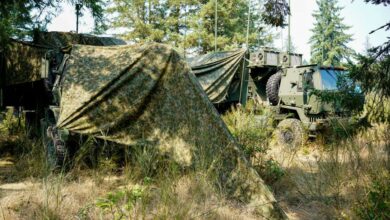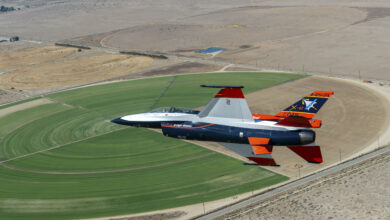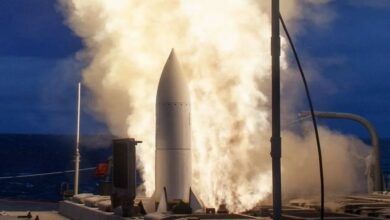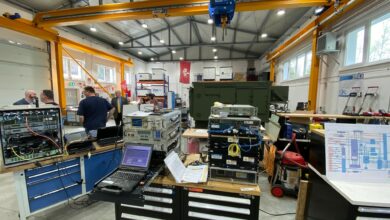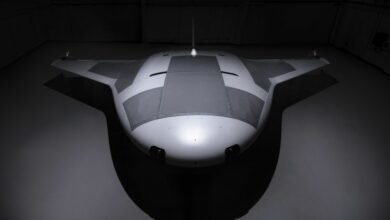Valkyrie Moves Forward With High-Speed VTOL Development
Valkyrie Systems Aerospace is moving forward with the development of a high-speed electric vertical takeoff and landing (eVTOL) aircraft after receiving an undisclosed research grant from the US Air Force.
As part of the AFWERX High-Speed Vertical Takeoff and Landing (HSVTOL) concept challenge, the grant will allow the company to conduct further research and development on its HoverJet Guardian concept, which seeks improved speed over existing VTOL aircraft.
According to Valkyrie, the HoverJet Guardian will possess agile mobility to support four critical military missions, including infiltration and exfiltration of special operations forces, personnel recovery, aeromedical evacuation, and tactical mobility.
The eVTOL is expected to have a cruising speed of 340 miles (547 kilometers) per hour, a transonic top sprint speed of 700 miles (1,127 kilometers) per hour, and an endurance of 15 hours at altitudes up to 40,000 feet (12.2 kilometers).
The HoverJet Guardian and the smaller variant called Eagly will reportedly offer three modes of operation: aircraft, hovercraft, and amphibious, capable of water landings.
“What makes the Eagle unique is the patented thrust vector control system, proprietary technology that enables it to operate in almost any terrain and/or adverse conditions,” the company told New Atlas.
‘More Resilient, Mission-Ready Military Force’
Valkyrie chief executive officer Glenn Dawson said being granted a research fund by the US Air Force “solidifies our belief in the HoverJet design and capabilities,” whether for military or commercial applications.
He explained that the company will continue collaborating with AFWERX, the US Special Operations Command, and industry partners on the project to ensure a “more resilient and mission-ready military force.”
Valkyrie managing partner Steve Tafoya revealed that the next phase of the project will include developing solutions and solidifying the concept to fit the US military’s operational requirements.
“The HSVTOL Concept Challenge has surfaced an impressive range and caliber of solutions to help us understand how to build a new class of air vehicles,” Air Force Research Laboratory chief innovation officer Dr. Reid Melville told the Australian outlet.
“We believe the organizations selected to receive market research investments at this stage have the potential to deliver truly groundbreaking innovation.”


